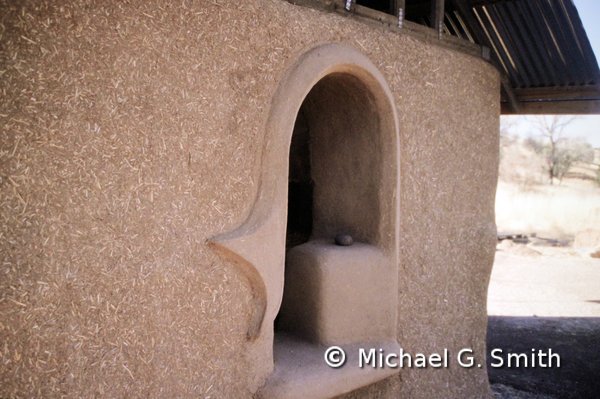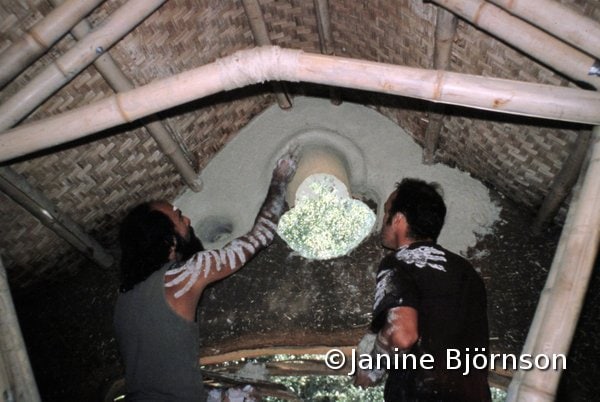
This straw bale shed by Athena and Bill Steen of the Canelo Project shows some of the range of textures possible from different mixtures of clay, sand, and straw.
Because it is sticky when wet, hard when dry, fireproof, inexpensive, and easy to use, clay makes an obvious finishing material for most kinds of natural walls. Clay plasters are usually applied in at least two coats. The base coat clay plaster I make consists of soaked clay soil mixed with lots of chopped straw and no sand. This material adheres strongly to straw bales, earthen walls, even stone, brick, and wood. It can be applied as thick as you want to reshape the wall, to add sculptural elements, or to increase thermal mass and fire resistance.

Workshop students applying kaolin clay finish plaster over a cob wall.
The finish coat is usually a mixture of finely screened clay slip (or powdered clay from a bag), fine sand, and fine fiber such as sifted chopped straw, horse manure, cattail fluff, or paper pulp. I generally add flour paste to improve hardness and water-resistance. Clay finishes can be many different colors and textures. They are durable except in wet conditions, where a more water-resistant finish such as lime plaster may be indicated.
